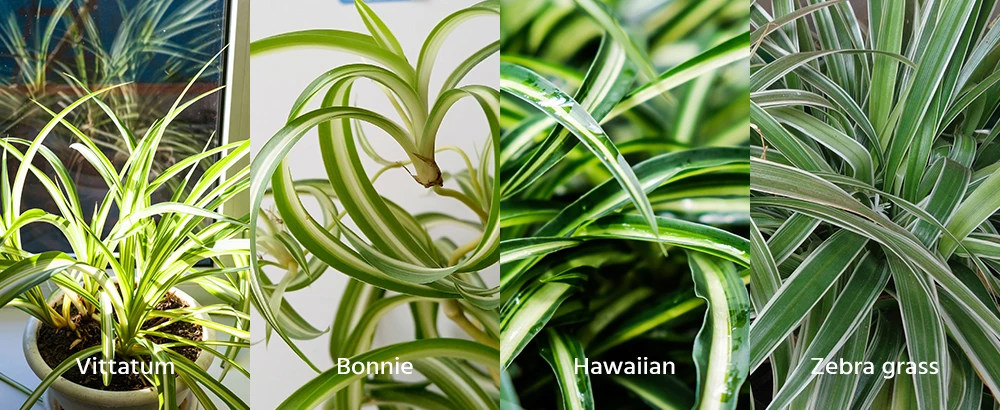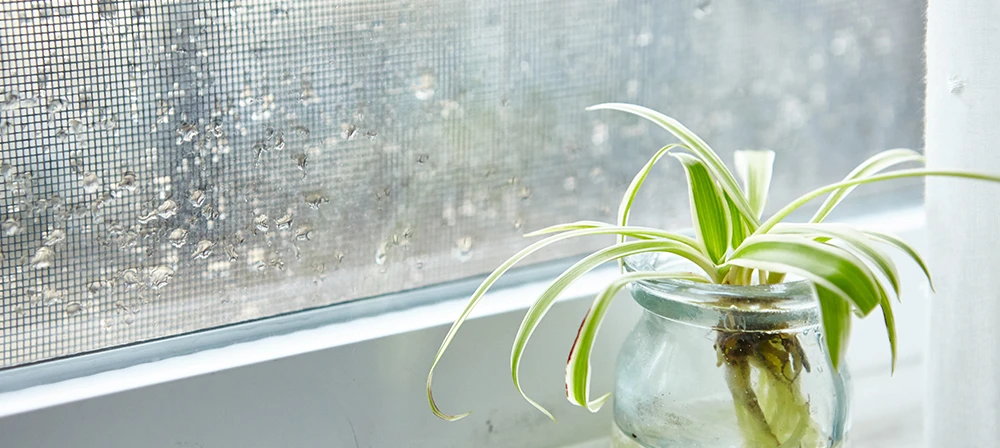Indoor Spider Plant Care Guide: 5 Tips for Thriving Plants
Spider plants are one of the most popular houseplants because they are super easy to grow and care for. They’re also safe for both humans and pets, and they help clean the air in your home!
Spider plants have long, thin leaves that hang over the sides of the pot, making them look nice and decorative. In the warmer months, like spring and summer, they grow small white flowers that will turn into baby spider plants, called “spiderettes.” These babies look like tiny spiders, which is where the plant gets its name.
Even though spider plants are easy to care for, there are a few things you should know to help them grow better. In this blog, we’ll share 5 simple tips to keep your spider plants healthy and happy indoors.
Common Spider Plant Varieties
Spider plants, also called Chlorophytum comosum or airplane plants, come in several popular types that are great for growing indoors. Here are a few common varieties
- Vittatum: Vittatum is a large variety with long and green leaves that have a wide white strip in the middle. It looks beautiful in hanging baskets where the leaves can drape down,
- Bonnie: Bonnie has solid green, curly leaves that make it stand out. It’s also perfect for hanging baskets.
- Hawaiian: Hawaiian has narrow and long leaves that start with a mix of green and white. As the leaves age, the variegation fades.
- Zebra grass: Zebra grass has dark green leaves with white edges, giving it a nice, eye-catching look.

Now, let us share the 5 tips to grow thriving spider plants indoors.
Tip 1: Perfect your watering routine
Spider plants like their soil to be moist but not too wet. Overwatering can lead to root rot, so it is important to strike the right balance. In the spring and summer, keep the soil consistently moist to support growth. During the winter, water is less often since the plant’s growth slows down.
A simple way to know when your spider plant needs water is to check the top inch of soil. If it feels dry to the touch, it’s time to give your plant a drink!
Tip 2: Master light requirements
Spider plants need bright, indirect light to grow their best. Avoid direct sunlight, as it can scorch the leaves and cause brown tips. For healthy growth, aim to provide your spider plant with 8 to 10 hours of sunlight each day.
These plants are also quite adaptable and can tolerate different lighting conditions. While they can survive in low light, their growth may slow down, and they might not produce shoots or baby plants as easily without enough sunlight.
If your indoor space doesn’t get enough natural light, LED grow lights are a great option to help your spider plants thrive. Full-spectrum LED lights to boost photosynthesis and support healthy growth.
Tip 3: Create the ideal growing environment
Spider plants thrive in warm, humid environments. Aim for a humidity level of 50–60% to keep them happy. The ideal temperature range is between 55°F and 80°F (13–27°C). Temperatures below 55°F can cause leaf damage and slow down growth, so be sure to keep your plants away from cold drafts or windows during winter.
For soil, a peat-based, all-purpose potting mix with good drainage works best. To support healthy, balanced growth, fertilize your spider plants once a month during the growing season with an all-purpose granular or water-soluble fertilizer. As the plant's growth slows down in colder months, reduce or stop fertilizing.

Tip4: How to propagate spider plants
One of the great things about spider plants is how easily they reproduce. Once the plant reaches maturity, it starts sending out long, smooth stems from among the leaves. White flowers will bloom along these stolons, and eventually, baby plants will form. You can use these baby plants to grow new spider plants through propagation. Here are two simple ways to do it:
- Propagation while attached to the parent plant
Similar to how strawberries spread, you can pin the baby plant directly into a pot of compost while it’s still attached to the parent plant. Once it establishes roots, you can cut it off from the parent. - Propagation by removing the baby plant
You can also clip off the baby plant and plant it directly into potting soil. Alternatively, place it in a container of water until it develops roots, then transplant it into the soil once the root system is established.
Tip5: Troubleshoot common issues
Growers may sometimes notice brown tips on spider plant leaves, which are often caused by pests or problems with the growing environment. While spider plants don’t usually get pests as easily as other plants, they can still be affected by common ones like aphids, whiteflies, and spider mites. A simple way to handle this is to rinse the plant with water. You can also use natural remedies like neem oil. If the pests are harder to control, you might need to use an insecticide. UVC lighting may also help control pests and diseases.
Brown tips on the leaves can also happen for other reasons, such as too much or too little water, over-fertilizing, too much light, dry or heated air, or exposure to chemicals. However, sometimes the yellowing or browning of leaves near the outer edges is just part of the plant’s natural aging process. If that happens, just remove and throw away the old leaves.

